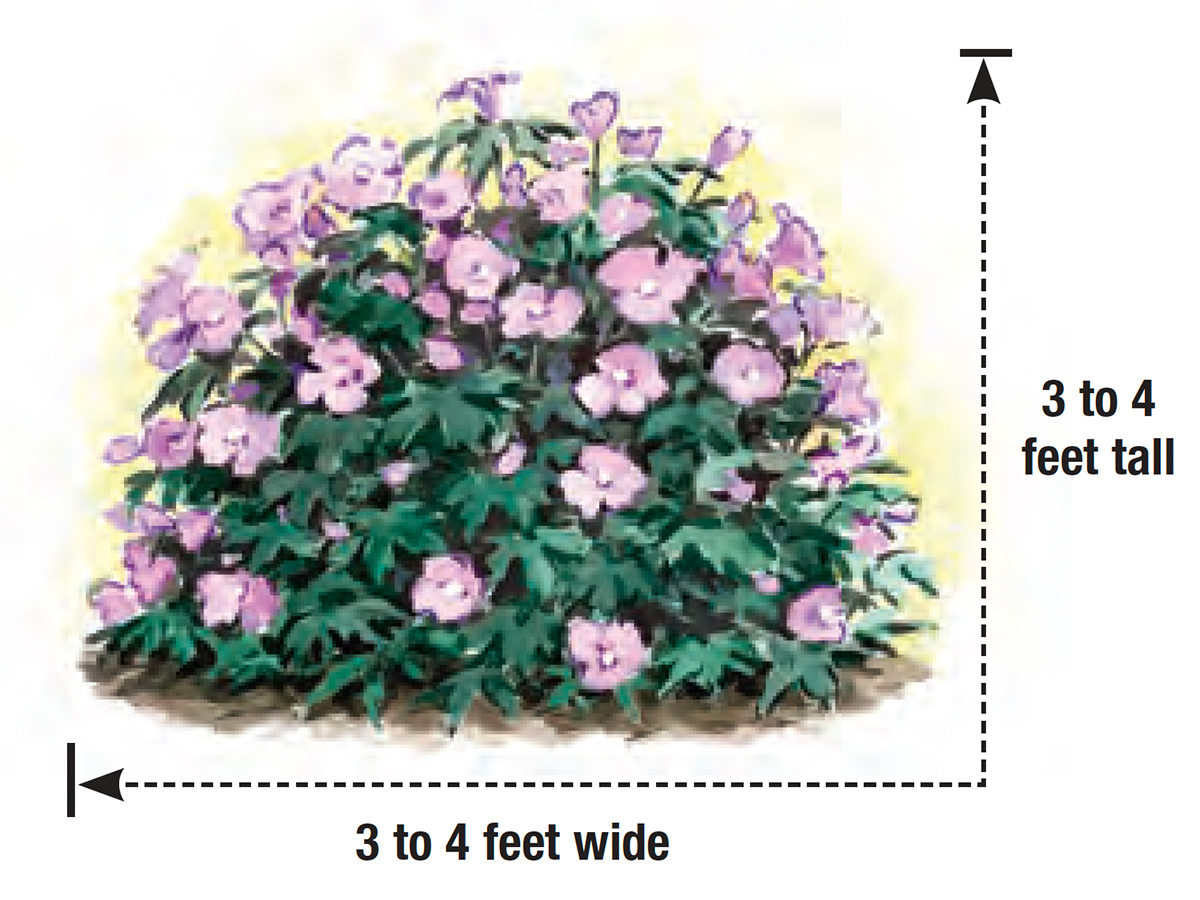A Rose of Sharon That Would not Produce Undesirable Seedlings
What involves thoughts whenever you consider “old style” or “traditional” vegetation? You may consider your grandmother’s bigleaf hydrangea (Hydrangea macrophylla and cvs., Zones 5–9), widespread lilac (Syringa vulgaris and cvs., Zones 3–7), forsythia (Forsythia spp. and cvs., Zones 5–8), or her final traditional—rose of Sharon (Hibiscus syriacus* and cvs., Zones 5–9). Native to China and India, rose of Sharon, or althea, was launched to the Americas previous to the 1600s. It has stood the take a look at of time for a number of causes, together with its capability to thrive with just about no care. It is usually the one woody Hibiscus species that’s hardy north of Zone 8. That, mixed with its ease of rising from seed and its reliable blooms, made it an ideal pass-along plant for a whole bunch of years—a blessing and a curse.
Rose of Sharon did fall out of favor within the latter a part of the final century, however lately there was a resurgence in new and improved cultivars. Breeders have been creating vegetation with variegated foliage, double flowers, and dwarf and columnar types, in addition to vegetation that don’t produce seed. I’ve amassed a set of over 25 of the latest cultivars on the College of Tennessee Gardens in Jackson. There are such a lot of good ones that it’s exhausting to decide on a standout, but when pressed, I’d say that Pollypetite® is amongst my most up-to-date favorites.
Rising right into a small rounded behavior, this choice has giant, darkish inexperienced, maple-like leaves, and enormous, comfortable, lavender-pink flowers with no eye. It begins to bloom in late spring. Each its leaves and its flowers are larger than these of typical rose of Sharons, making it look extra like a tropical hibiscus (Hibiscus rosa-sinensis and cvs., Zones 9–11) however with out being garish and gaudy. When it’s grown in common to good backyard circumstances, blooms proceed into fall. For the perfect flower manufacturing, this shrub must be grown in six or extra hours of direct solar. Bees, butterflies, and hummingbirds are drawn to its nectar, and the big petals make for a straightforward touchdown.
Pollypetite® is a second-generation hybrid and has the very best stage of sterility ever seen in rose of Sharons, successfully fixing the issue of undesirable seedlings in your backyard. It’s the results of an openpollinated cross between two cultivars of Hibiscus paramutabilis × syriacus, ‘Tosca’ and ‘Lohegrin’, by legendary horticulturist Polly Hill (1907–2007). The hybrid, given the cultivar identify ‘Rosina’ in 1997, has been lately rebranded and delivered to market with the trademark identify Pollypetite®.
Like different rose of Sharons, Pollypetite® is tolerant of a variety of soil sorts; as soon as established, it’s drought tolerant as nicely. It is usually deer resistant. I’ve discovered it to not be very enticing in a nursery pot and to be somewhat gradual to begin within the panorama—like another dwarf shrubs—however it’s nicely well worth the wait in the long run. Its compact measurement, sterility, and skill to thrive in a variety of circumstances make this plant a winner in most gardens.
Pollypetite® rose of Sharon
Hibiscus ‘Rosina’
Zones: 5–9
Circumstances: Full solar; adaptable to a variety of common to dry soil sorts
Native vary: China, India
*Invasive Alert:
Rose of Sharon (Hibiscus syriacus)
This plant is taken into account invasive in TN, and WV.
Please go to invasiveplantatlas.org for extra data.
Jason Reeves has been placing vegetation to the take a look at on the College of Tennessee in Jackson since 2002 and might be adopted on Fb at “Jason Reeves – within the backyard.”
Illustration: Elara Tanguy
Sources:

